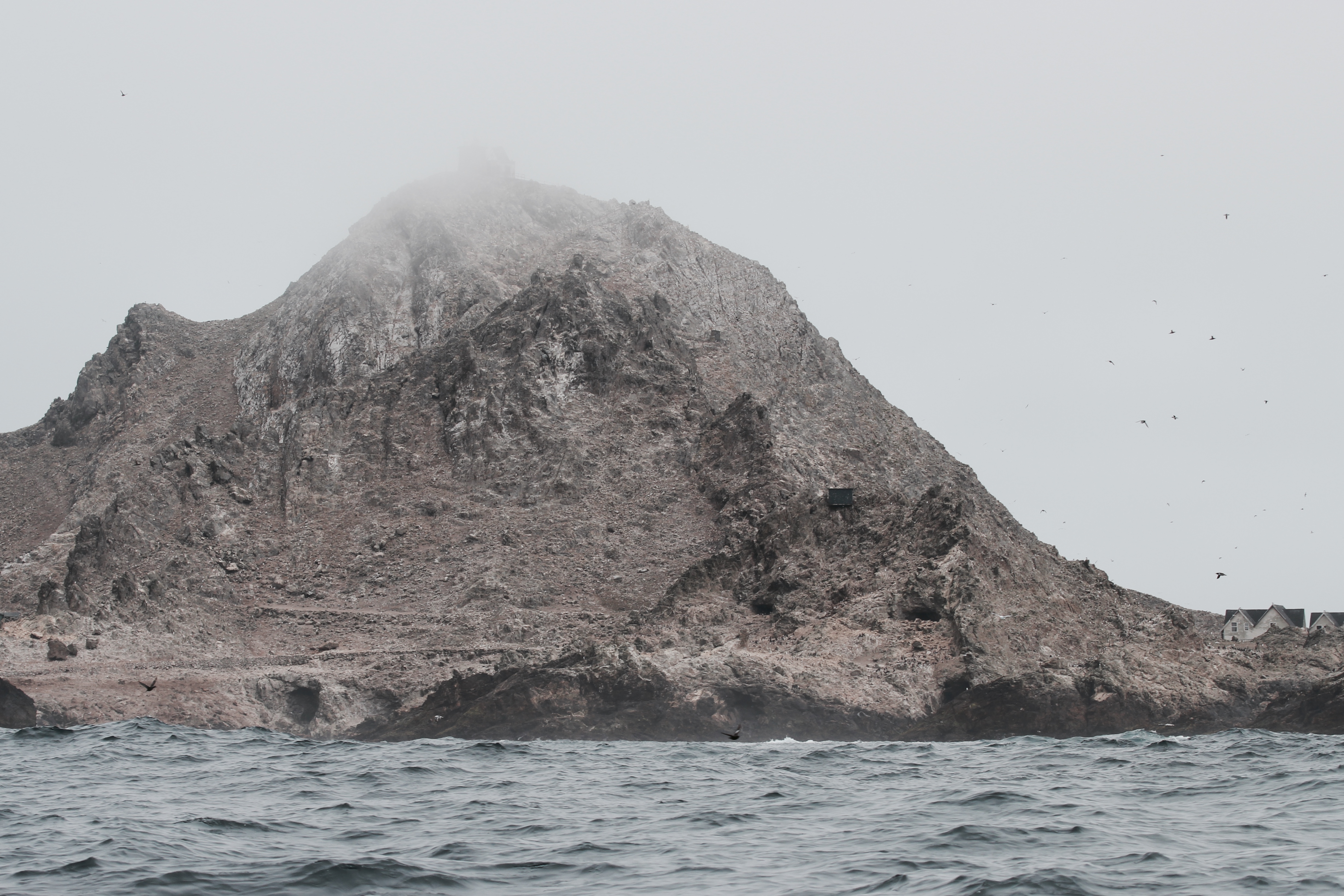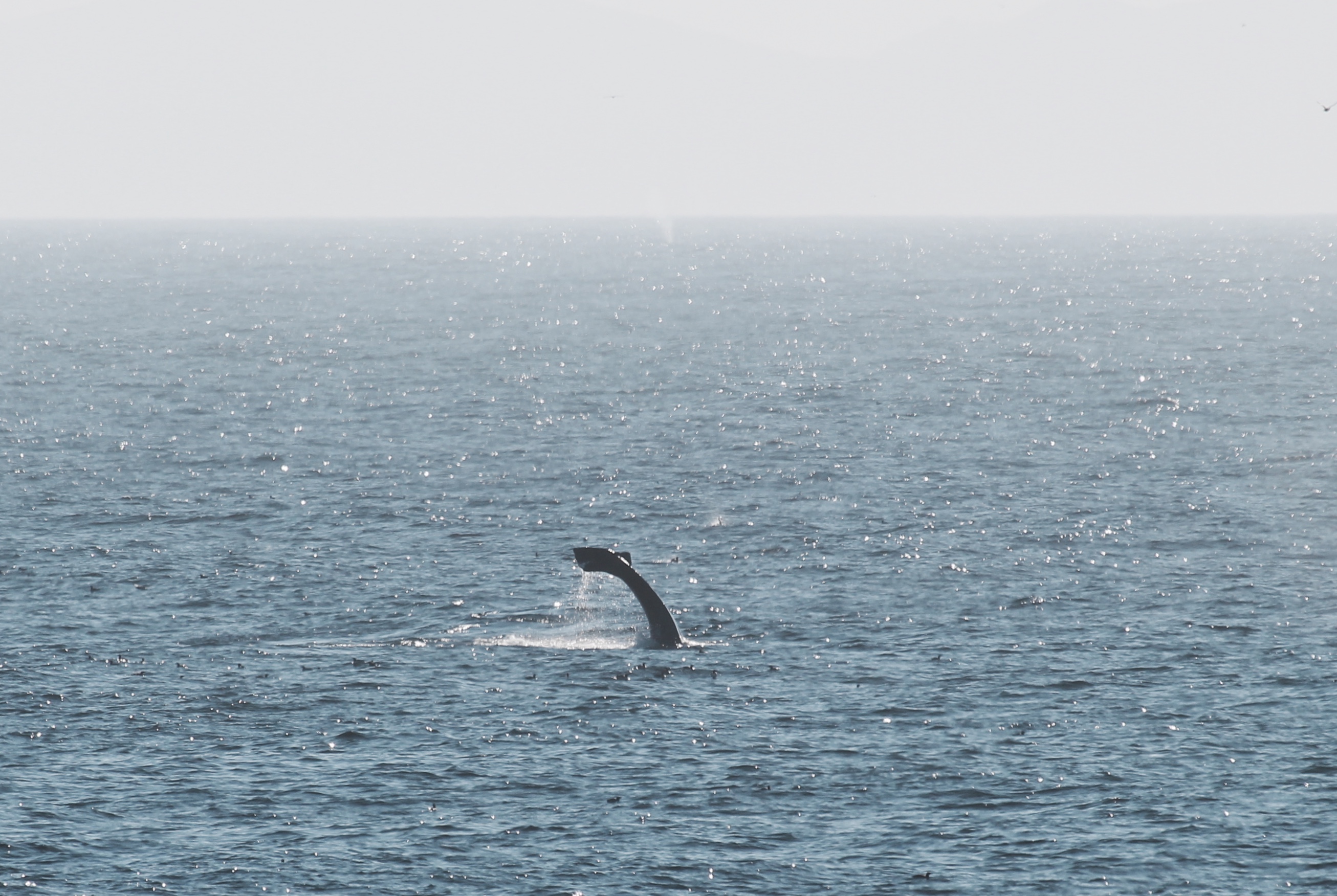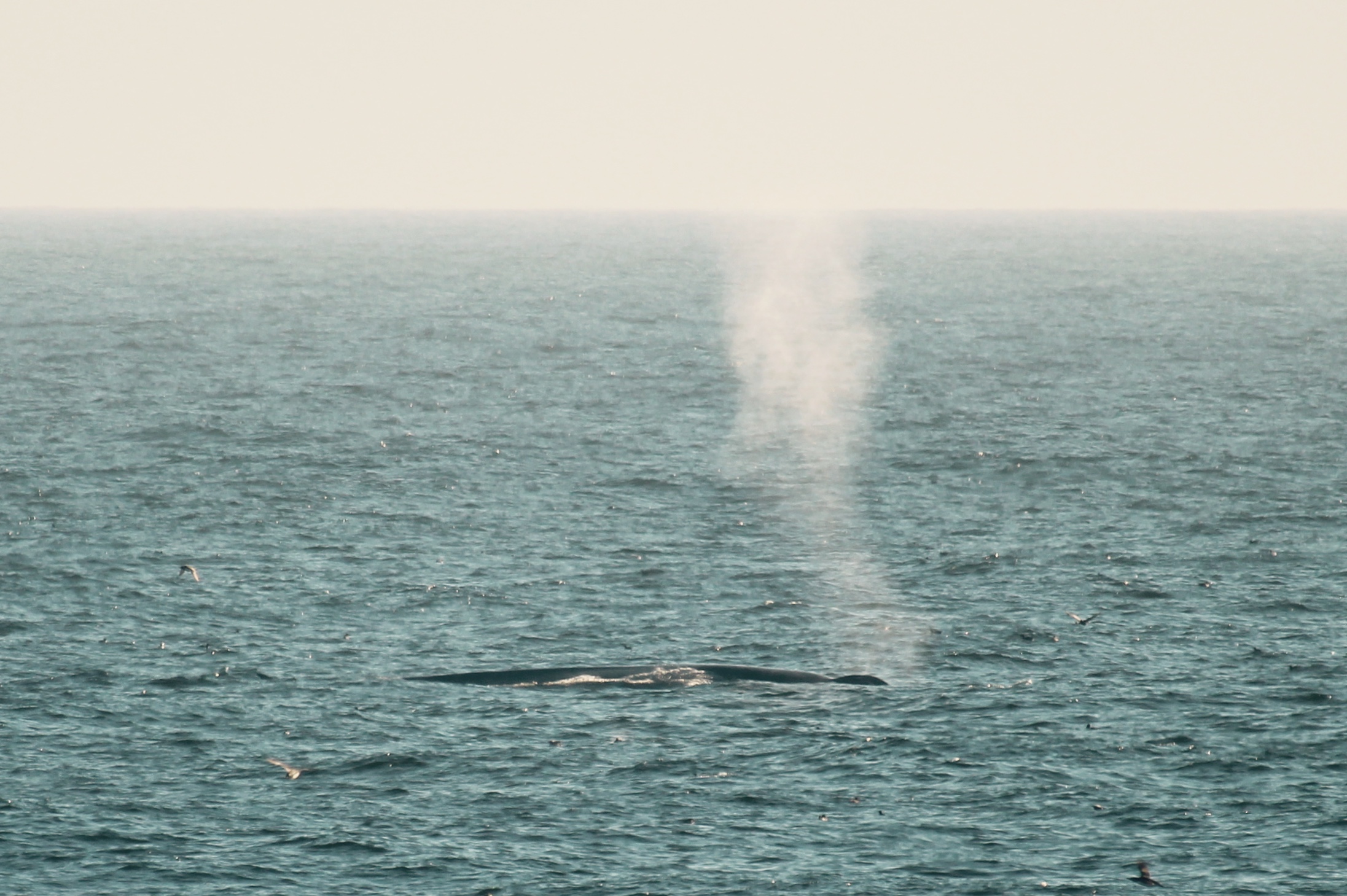By Bradley Wilkinson, SJSU Graduate Student
This post is part of Dr. Gitte McDonald's marine mammals class blog series.

I had never seen so many whales before in my life. Standing atop Southeast Farallon Island, bracing against the rails of a relic lighthouse, I commanded an unequaled view of the surrounding seascape. To the northeast, Pt. Reyes stood before Bodega Bay, forming an extreme limit to my far-reaching gaze. The Golden Gate Bridge was blatantly obvious to the east, framed nicely against the hustle and bustle of San Francisco. To the south and west, endless blue. Huge container ships waiting for port entry outlined the invisible lanes of industrial traffic.
But the whales. The whales were everywhere, stealing the proverbial show. Spouts popped off in every direction, grouped in conglomerates of nearly a dozen on occasion. In total, I counted over eighty whales of three species that afternoon, in only one hour of effort. The extreme productivity of the Gulf of the Farallones had attracted this concentration of cetaceans, a predictable patch of food nested with the dynamism and variability of the oceanic environment. But just below the surface, sharing the water column with swarms of krill and schools of anchovy, lurked a lethal threat. I had seen them while onboard the sailboat to the island. Although only a small part of each one was visible at the surface, I knew much more lay beneath. This paradoxically obvious yet invisible threat was both insipid and borne of abandonment. Derelict fishing gear.

And of course, threats breed consequence. A few days later, I witnessed this firsthand. While conducting a seabird diet assessment on another end of the island, a group of whales fed a bit offshore. Taking a break to observe the diving giants, one of the members of our party suddenly exclaimed that an individual in the feeding group was missing a tail. Surely not, we thought. Perhaps the flukes had been seen at an odd angle, performing an optical trick. We studied the group further. Then we all saw it; a whales spouted, rolled, and began to dive. As it arched its back and raised its tail, it was all too obvious that both of the flukes of the animal were gone. It was as if they had been sheared off by a gigantic pair of scissors. But of course we knew that wasn’t the case. The most likely candidate was an entanglement event with derelict fishing gear.
Unfortunately, this is not a rare occurrence along the California coast. In fact, statistics point to 2016 as the most frequent year of entanglement events on record. Whales, unable to detect the long lines of nylon suspended in the water, become trapped in gear as it wraps around body parts ranging from mouths, to flukes, to flippers. Fortunately, there are people who are trying to help. California Whale Rescue is a group of dedicated professionals who not only free entangled whales when reported, but work with both the industry and the public to solve this issue from the start. Together, they look to help stem the tide of increasing entanglements. To learn more about this group and how you can do your part to prevent whale entanglements like the one described here, please visit http://www.cawhalerescue.org. Thanks also go to Point Blue Conservation Science and Farallon National Wildlife Refuge for aspects of this post.


